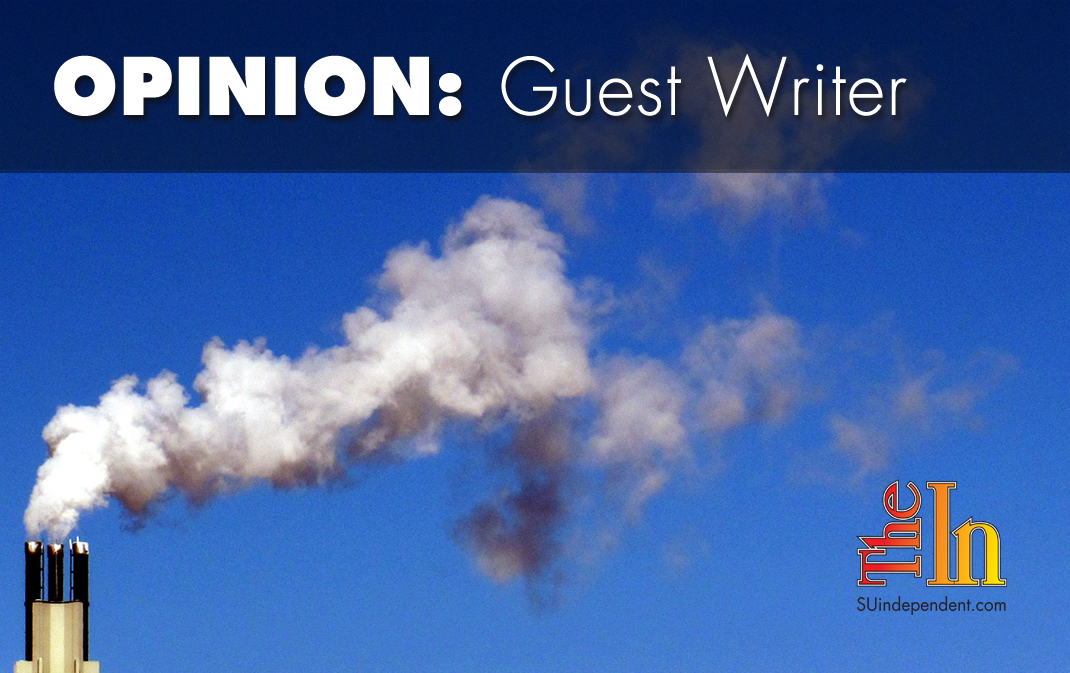
Don’t gamble the planet’s future on unproven technologies
Devoting time, money, and energy to speculative negative emission technologies like direct air capture or bioenergy with carbon-capture storage is wasteful
By Hugh J. Sealy
A group of senators recently introduced a bill that aims to combat climate change by funding research into “negative emission technologies,” which take greenhouse gases out of the atmosphere and store them underground.
But these technologies aren’t very effective and probably never will be. Investing in them would divert resources from proven emission-reduction initiatives. By the time we realize that our gamble has failed, it will be too late to prevent the worst consequences of climate change.
American lawmakers aren’t the only ones betting on negative emission technologies. The 2015 Paris Agreement is banking on tech to prevent global temperatures from rising more than 2 degrees Celsius above pre-industrial levels.
These technologies are largely theoretical. One of the most prominent is “bioenergy with carbon-capture storage,” or BECCS. The strategy envisions a future wherein humanity burns grasses, trees, and other vegetation at power plants and then sequesters the emissions underground, where they’d stay trapped in mineral formations.
An analysis conducted by Stanford scientists found that expecting BECCS to meet the goals of the Paris Agreement is wishful thinking. Growing the plants needed would require an area double the size of India.
Another analysis revealed that ecological factors could render BECCS impractical. BECCS require huge amounts of fresh water. More than 1.2 billion people currently live in water-stressed areas. Growing that biofuel would rob communities of their limited water supplies.
Another negative emission technology, “direct air capture,” is more pie-in-the-sky thinking. The technology involves pumping air through a filter to trap carbon and store it underground. Climeworks, a Swiss company, has constructed a direct air capture facility. The firm estimates that 250,000 such plants would be needed to remove just one percent of annual global carbon dioxide emissions.
Devoting time, money, and energy to speculative technologies is not just wasteful. It provides a false sense of security that we have time to wait for technologies to make up for the emissions of the present.
Climate change is causing harm worldwide. Undoing the damage will require cutting carbon emissions immediately.
Island nations are especially vulnerable to the volatile storms caused by climate change. Last year, the Caribbean faced three of the most expensive hurricanes ever recorded. This year’s hurricane season will be just as vicious.
Warmer global temperatures have produced more severe wildfire seasons. They have fueled the spread of animal-borne illnesses like the West Nile and Zika viruses.
Fortunately, there are steps we can take to reduce emissions now.
We can start by tweaking our diets. Livestock account for roughly 20 percent of greenhouse gas emissions. Curtailing meat consumption to the level recommended by standard health guidelines could cut food-related emissions nearly 30 percent by 2050.
Adoption of electric vehicles could reduce carbon pollution by 430 million metric tons annually by 2050. That’s about the same amount of emissions produced by 80 million traditional cars.
Such a shift isn’t far-fetched. Electric cars will account for more than half of new car sales by 2040.
These solutions are proven. Yet too many in the scientific community have acquiesced to the idea that big emissions cuts are politically impossible and that only technology can save us. But by promoting unproven emissions-reduction technologies, the scientific community has given politicians inappropriate intellectual cover to put off the cuts we need.
Hugh Sealy is a professor in the Department of Public Health and Preventive Medicine at St. George’s University in Grenada. He has been a lead negotiator for small island states since 2008, including at the historic COP 21 in Paris and at the COP 22 Summit in Morocco.
Articles related to “Don’t gamble the planet’s future on unproven technologies”
The viewpoints expressed above are those of the author and do not necessarily reflect those of The Independent.
How to submit an article, guest opinion piece, or letter to the editor to The Independent
Do you have something to say? Want your voice to be heard by thousands of readers? Send The Independent your letter to the editor or guest opinion piece. All submissions will be considered for publication by our editorial staff. If your letter or editorial is accepted, it will run on suindependent.com, and we’ll promote it through all of our social media channels. We may even decide to include it in our monthly print edition. Just follow our simple submission guidelines and make your voice heard:
—Submissions should be between 300 and 1,500 words.
—Submissions must be sent to editor@infowest.com as a .doc, .docx, .txt, or .rtf file.
—The subject line of the email containing your submission should read “Letter to the editor.”
—Attach your name to both the email and the document file (we don’t run anonymous letters).
—If you have a photo or image you’d like us to use and it’s in .jpg format, at least 1200 X 754 pixels large, and your intellectual property (you own the copyright), feel free to attach it as well, though we reserve the right to choose a different image.
—If you are on Twitter and would like a shout-out when your piece or letter is published, include that in your correspondence and we’ll give you a mention at the time of publication.



